Showing top 0 results 0 results found
Showing top 0 results 0 results found

Ready to take your affiliate marketing income to the next level?
Whether you’re a full-time affiliate marketer or use partnership programs as additional business income, there are several things you need to be aware of to meet your revenue goals.
If you’re curious to learn more, read on to discover five of the worst mistakes affiliate marketers do, and what to do instead.
Most common affiliate marketing mistakes
1. Blogging without business objectives
Why did you start your affiliate marketing blog? What business goals do you hope to achieve with your blog? What does affiliate marketing success mean to you and how will you know when you’ve achieved it?
Without answering these questions, it’s impossible to create a focused affiliate marketing blogging strategy.
Before going any further in your affiliate marketing journey, get clear on your business objectives.
Here’s an example:
Why we started: “We started our blog to relieve some of the burden off our sales department and boost our cash flow potential.”
Our business objective: “We’d like to create a passive income stream bringing in a minimum of $100k a month in affiliate marketing blogging income.”
Our success indicator: “We’ll know we’ve achieved success when our monthly affiliate marketing income reaches a minimum of $100k per month for 12+ months. The following year, we’d like to see that number increase by 10% each month.”
2. Sponsoring too many product types
Writing product reviews for every kind of item under the sun? By trying to sell everything, you could end up selling nothing.
Instead, stick with high-demand products in your specific niche.
If you don’t have a niche yet, now’s the time to choose one — otherwise, you’ll end up writing content without a refined target audience or core message.
In other words, no direction means that you didn't do your market research and that leads to a lack of trust. People want to buy from reliable affiliate marketers with experience and expertise in a core niche.
For instance, if you have experience with cloud-based project management tools, you might focus on project management SaaS apps. Or, if you have marketing experience, you might focus on marketing consultancy services.
If you want to represent a wider array of products and services, consider segmenting your audience and blogs so you can produce tailored content for each group.
For instance, if you’ve chosen online gaming as your niche, you might cater to die-hard action gamers on one blog, life simulation gamers on another, and strategy gamers on a third.
Here’s what you might cover on each:
- Blog 1, Action Gamers: Games like Fortnite and its accompanying products, such as Fortnite Spiderman skins and other relevant accessories

- Blog 2, Life Simulation Gamers: Games like Sims and its accompanying products, such as the Horse Ranch Expansion Pack and other relevant add-ons
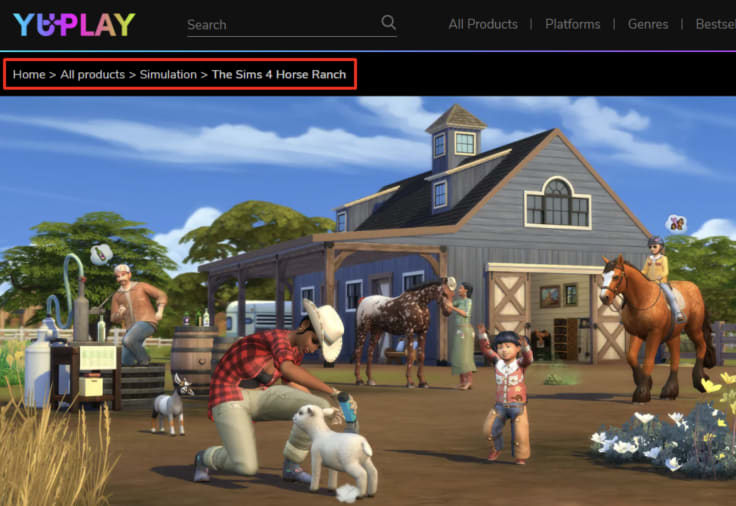
- Blog 3, Strategy Gamers: The Age of Wonders game and its accompanying products, such as the Dragon Dawn Content Pack and other relevant options
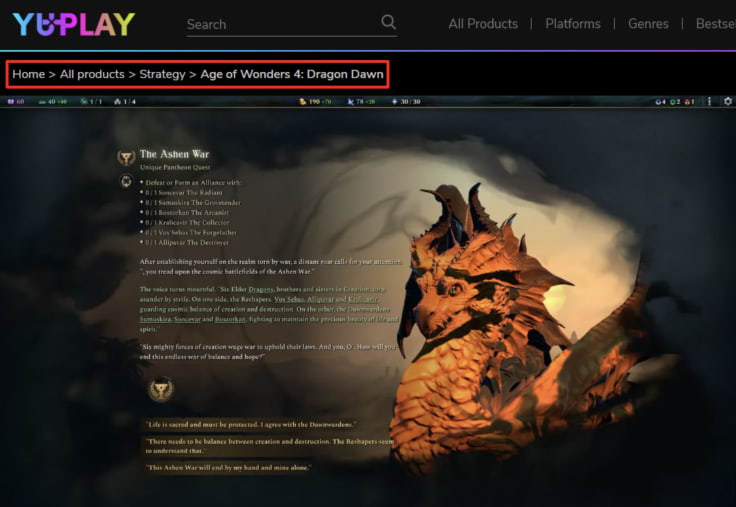
To vary your messaging style and language for each of these segments, consider using an AI blog writer to diversify your copy in just a few clicks. Simply open a doc in the writing software, choose a specific tone and language, and then paste your article or enter a prompt:
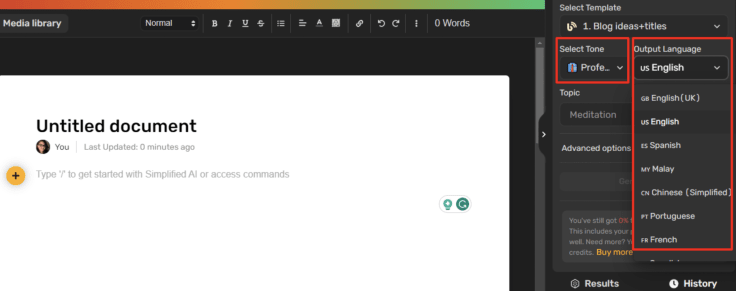
3. Planning content topics without a clear target market in mind
Piggybacking on our previous points, without an ideal customer in mind, you can’t produce blog content that solves your audience’s needs and pain points. And without high-value content, you also can’t expect high affiliate marketing returns.
That’s why it’s essential to hone in on your target market in detail by creating buyer personas that outline their:
- Preferred messaging style
- Buying habits
- Interests, needs, and core problems (and how you can solve them with your product options)
Use these specifications to plan blog content topics in line with your personas.
An important note about sensitive blog topics
If you cover sensitive topics on your affiliate marketing blog, approaching content with the utmost care and responsibility is crucial to building trust with your audience.
For instance, if you’re running a mental health blog, provide as much value and personalized support to your audience. In this scenario, consider using interactive quizzes (see example below) and feedback questionnaires to get to the root of their problems and recommend tailored options.
With this example in mind, let’s look at a few ways you could write with integrity while still effectively promoting your mental health affiliate products and services:
Prioritize accurate and trustworthy information
Always ensure that the information you share regarding mental health and medications is accurate, up-to-date, and based on credible sources.
Misinformation can have serious consequences, and as an affiliate marketer in this niche, your primary focus should be on providing reliable data and support to your readers. If possible, ask a medical professional to review and approve your content.
Focus on educating, not selling
Relatable, warm, and informative content can help establish your blog as a reliable source of information, so you can foster ongoing trust with your readers.
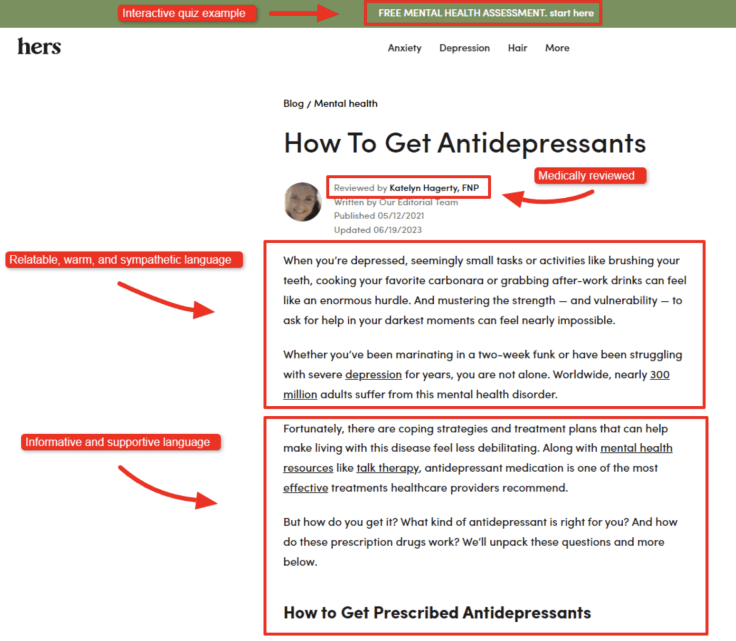
Rather than being overly promotional, concentrate on educating your audience about mental health conditions and how to access treatment options from an unbiased lens.
For instance, if you’re planning a blog post about how to get antidepressants like the one shown above, present readers with an overview of all of their options — not just the ones affiliated with your product partner.
Here’s an example:
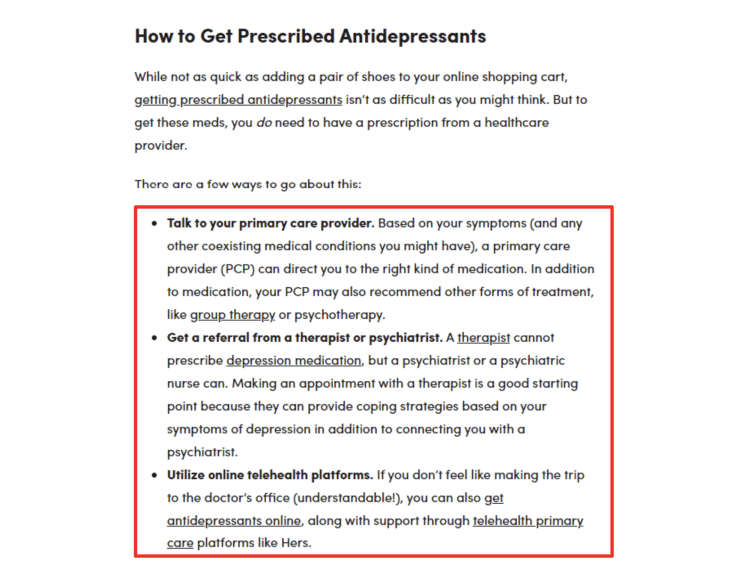
Disclose affiliate relationships transparently
Being transparent about your affiliate relationships is especially important in sensitive niches like mental health. Clearly disclose any affiliate links or partnerships from the get-go so readers understand your financial interests.
Avoid over-promotion of sensitive products
Be cautious about excessively promoting antidepressants or any specific medication. It’s essential to strike a balance between discussing treatment options and providing impartial information. Always encourage your readers to consult qualified healthcare professionals for personalized advice.
4. Unrefined messaging
Among common mistakes affiliate marketers make is not having a clear message. As you can imagine, it wreaks havoc on any business or marketing strategies — especially affiliate marketing. Without a clear message, you not only lose the ability to personalize your content, but you also confuse your audience. Over time, this may lead to distrust and high bounce rates.
To develop a clear message for your affiliate marketing blog, write down who you are, what you do, and what you sell.
Then, consider your:
- Business goals
- Product/service types
- Target audience
- And competitive advantage
Here’s an example:
Who you are, what you do, and what you sell: “I’m a marketing consultant that gets paid affiliate commissions for referring SaaS app trials and paid plans.”
Your business goals: “My goal is to create a passive income stream bringing in $100k a month in affiliate sales for 12+ months, increasing by 10% each month the following year.”
Your product/service types: “Free trial subscriptions and paid plans to highly rated project management apps.”
Your target audience: “Project managers and business owners who need remote tools to refine their project management workflows.”
Your competitive advantage: “I spend ample time testing and comparing the most highly-rated project management apps on the planet, so my audience can skip the research and meet their business needs immediately.”
With these factors in mind, uncover your blog’s message.
For instance, in this case, you might choose:
▶️ Your clear message: “Plan projects smarter with efficient project management tools.”
▶️ Tagline: “Skip the trial-and-error and learn about the best project management software on the planet.”
To take this tip up a notch, consider your messaging when strategizing calls-to-action (CTAs), too. For instance, “download my project management guide” or “start your free Asana trial”.
Integrate these CTA links and buttons on relevant landing pages, blog posts, and product pages. You can also include links in your professional email signature to encourage more downloads when sharing content with your email list subscribers.
5. Affiliate marketing strategy not including SEO
Having an SEO strategy is key to generating organic traffic to your blog — but don’t expect it to come easily or quickly. It takes patience, strategy, and solid SEO experts to start gaining traction.
Some vital factors to consider when optimizing your blog include:
- Catering to search intent
- Building links
- Strategizing content pillars and clusters
- Having a responsive blog — your blog should be mobile-optimized and look professional on any screen or size
Another key pillar is creating high-value content using Google’s E-E-A-T principle, which stands for Experience, Expertise, Authoritativeness, and Trustworthiness.
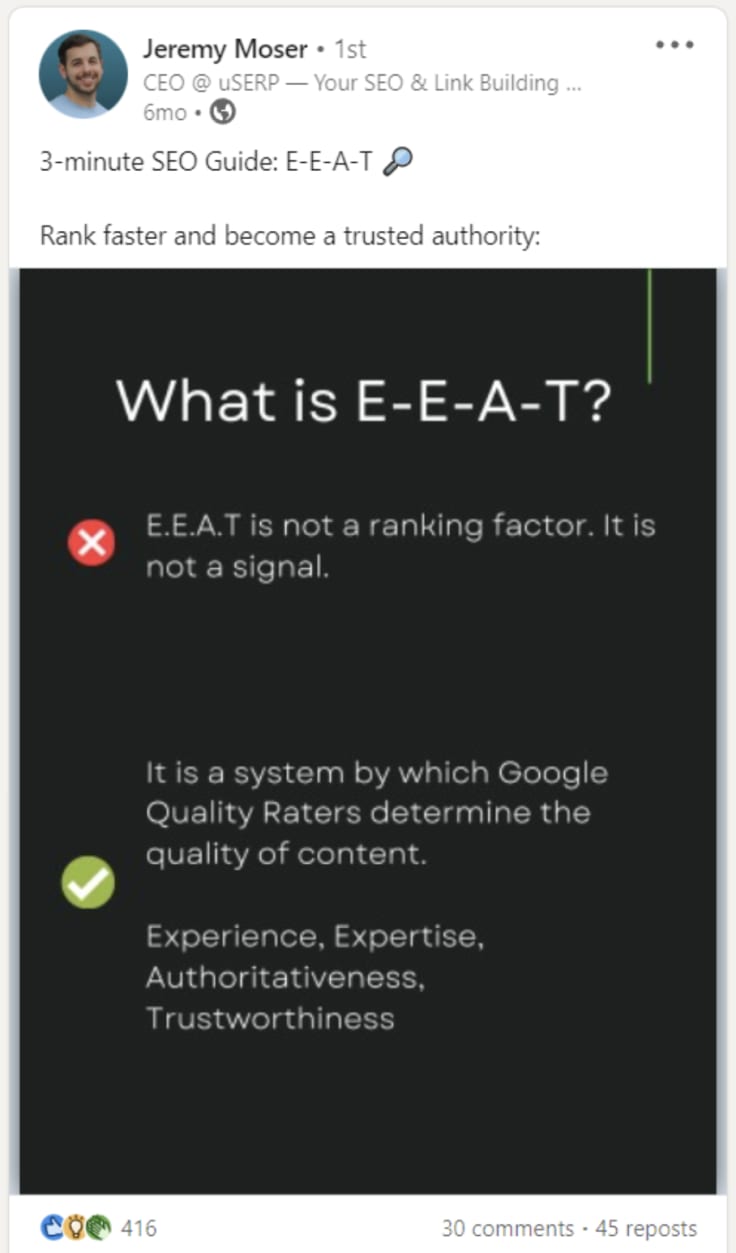
Here’s what to prioritize when following the E-E-A-T principle:
Genuine content over promotion: Avoid overwhelming readers with excessive promotional content and focus on creating genuine and helpful blog posts that address your audience's pain points and interests.
Link integration: Skillfully integrate affiliate links into your content, striking the perfect balance between promotion and providing valuable information to readers. Use your experience and expertise to build oomph around your links and “show, not tell” their value. For instance, implement engaging storytelling, personal anecdotes, explainer videos, helpful infographics, and screenshots to demonstrate how something works.
Take a look at the following blog post covering the 23 best books on marketing strategies to demonstrate what we mean:
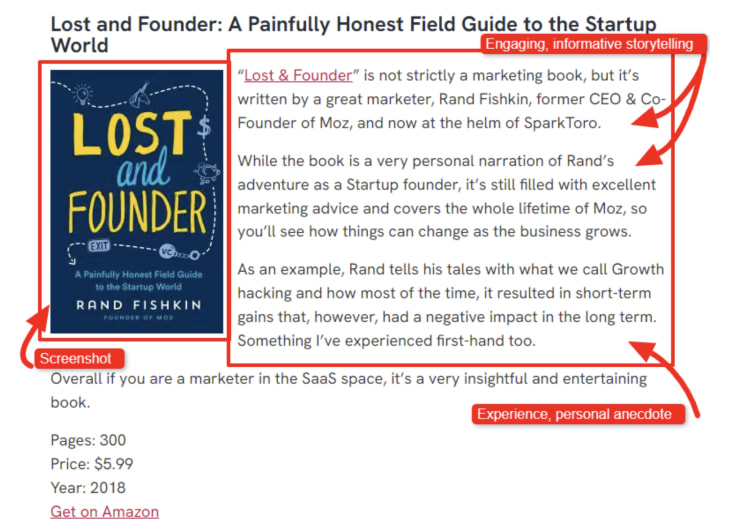
Not only did the affiliate marketer weave in commission links naturally throughout this piece, but they also:
- Added a helpful screenshot next to each book recommendation
- Shared personal anecdotes
- Used engaging storytelling
- Shared detailed synopsis information for each book
- Integrated their experience and expertise
Quality over quantity: Consistency is important, but don't sacrifice quality content for frequent updates. Focus on providing well-researched, insightful, and engaging blog posts that add value to your readers' lives.
Get to the bottom of what your audience really wants to know by sending out a feedback questionnaire, then produce your content accordingly.
For instance, if you represent branding services and cater to aspiring entrepreneurs, then your audience might voice their need for business ideas, merch resources, logo and design insights, and how to legalize their new businesses.
In this scenario, you could apply their feedback by covering relevant topics, such as the following blog post on 11 small business ideas — and other meaningful subjects, for instance, how to incorporate a business, find a graphic designer, or print branded merch.
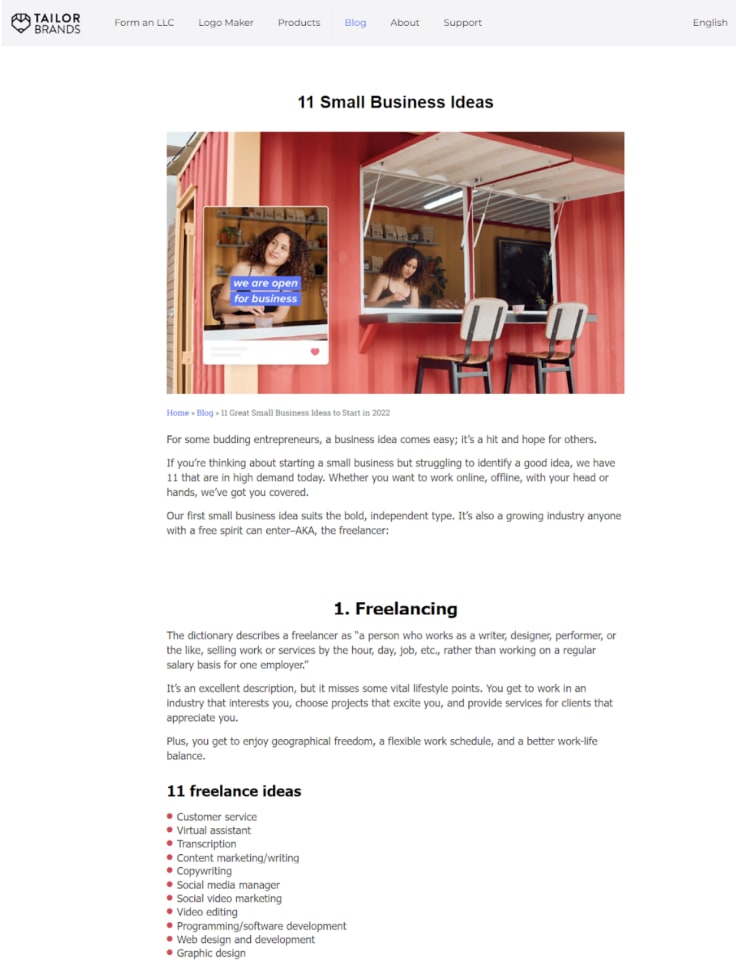
Affiliate marketers, beware!
And there you have it.
In today’s piece, we discussed five mistakes that all successful affiliate marketers should avoid like the plague.
Your next step? Put these insights into action! Bookmark and print out this article and share it with any relevant members on your affiliate marketing team. Then, carve out time in your schedule to integrate the tips we covered until you’ve revamped your blog to its fullest potential.
Rinse and repeat these tips as you continue your affiliate marketing journey, and don’t forget to monitor blogging analytics and insights so you can make data-driven improvements over time.
That’s it for now, marketers.
To your success!
PS: Looking for a lucrative product to add to your affiliate marketing list? Join forces with us today and discover why LiveChat is trusted by 30,000+ businesses and 1,500+ business partners!



